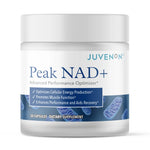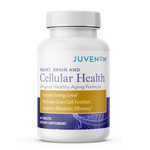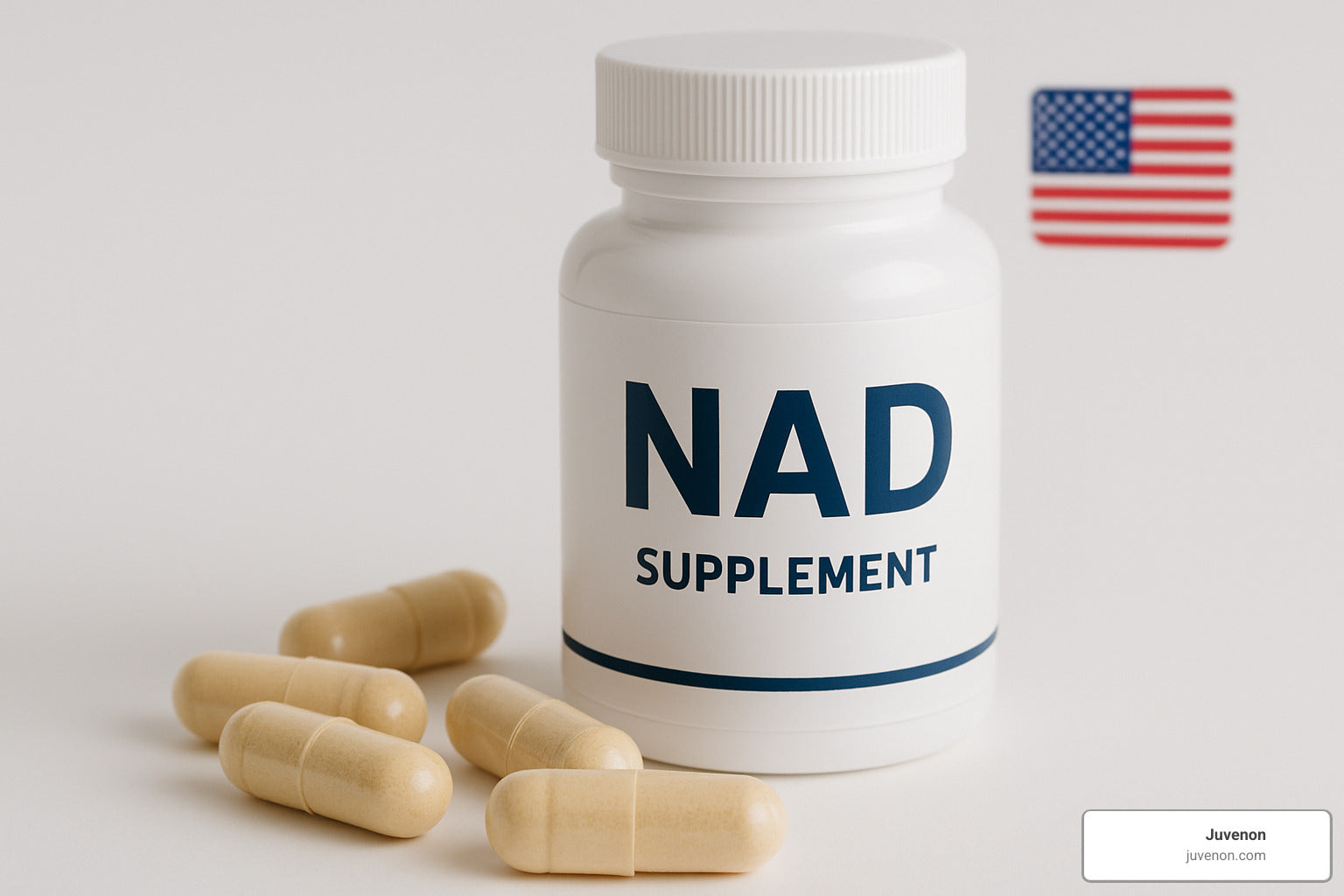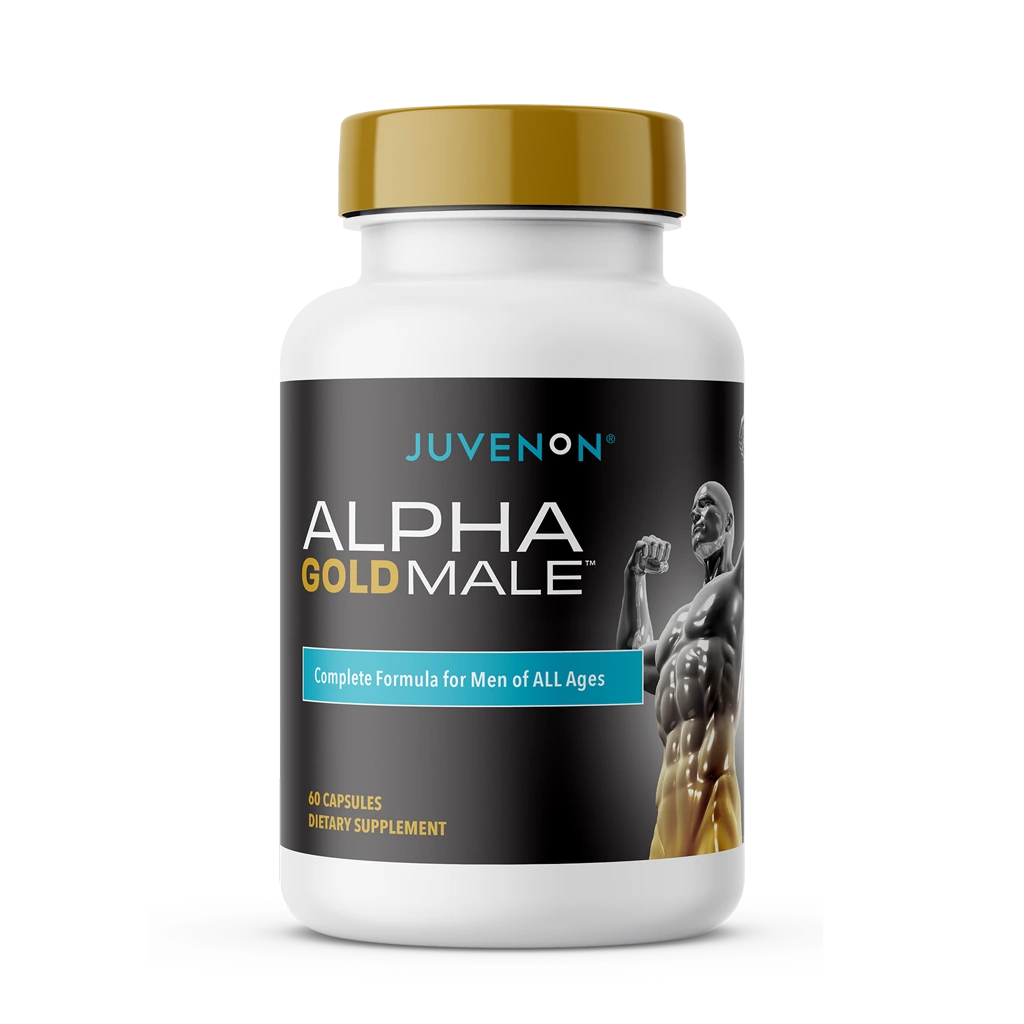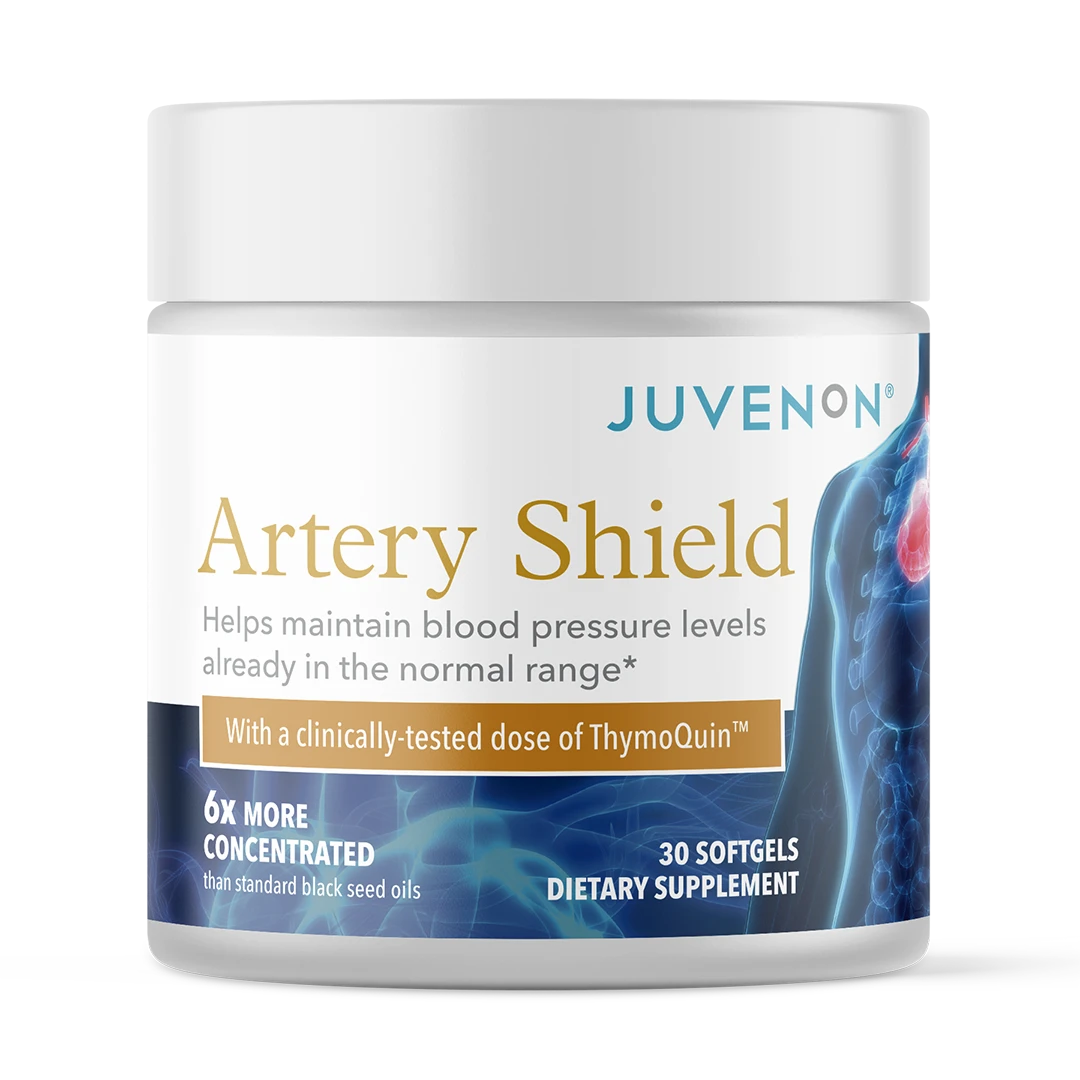Understanding Blood Pressure Basics
What is the difference between systolic and diastolic blood pressure? This is a crucial health question that many people have. Here's a simple explanation:
| Blood Pressure Type | Definition | When It Occurs | What It Measures |
|---|---|---|---|
| Systolic (Top Number) | The pressure in your arteries when your heart contracts | During heartbeat | Maximum pressure in arteries |
| Diastolic (Bottom Number) | The pressure in your arteries when your heart relaxes | Between heartbeats | Minimum pressure in arteries |
Blood pressure is measured in millimeters of mercury (mmHg) and is always expressed as two numbers, such as 120/80 mmHg. The first number represents the systolic pressure, while the second number represents the diastolic pressure.
Think of your circulatory system as plumbing. Systolic pressure shows how hard your heart is working to pump blood through your pipes (arteries), while diastolic pressure shows the pressure in those pipes when the pump is resting.
Understanding this difference isn't just medical trivia – it's essential knowledge for monitoring your cardiovascular health. Both numbers provide valuable information, but they tell different parts of your heart's story.
I'm Michelle M. Henson, a health content specialist with over 20 years of experience simplifying complex medical topics like what is the difference between systolic and diastolic blood pressure for readers seeking clear, actionable health information. My background as both a UCLA English graduate and health compliance editor ensures you're getting accurate information that's easy to understand.
What is the Difference Between Systolic and Diastolic Blood Pressure?
Have you ever wondered what those two numbers actually mean when the nurse wraps that cuff around your arm? Let's explain what is the difference between systolic and diastolic blood pressure in a way that makes sense.
Your heart is essentially a powerful, rhythmic pump that works in a continuous cycle of squeezing and relaxing. These two distinct phases create different pressures in your arteries – and that's exactly what we're measuring with those two numbers.
"Systolic pressure is when the heart muscle contracts, while diastolic pressure is when the heart muscle relaxes."
Think of your circulatory system like the plumbing in your home. The systolic pressure (top number) shows how hard water pushes through the pipes when the pump is actively pushing, while the diastolic pressure (bottom number) shows the pressure that remains when the pump is resting between pushes.
| Characteristic | Systolic Pressure | Diastolic Pressure |
|---|---|---|
| What it represents | Maximum pressure during heart contraction | Minimum pressure during heart relaxation |
| Position in reading | Top number (e.g., 120 in 120/80) | Bottom number (e.g., 80 in 120/80) |
| What it indicates | Force exerted on arteries during heartbeat | Arterial pressure between beats |
| Age-related changes | Tends to increase with age as arteries stiffen | May decrease slightly with age |
Both measurements work together to give your doctor a complete picture of your heart health. They're partners in the same cardiac story – just representing different chapters of your heart's continuous work.
Understanding Systolic Pressure
When your heart beats, it contracts forcefully, pushing blood out to the rest of your body. This contraction creates a surge of pressure in your arteries – that's your systolic pressure.
In a blood pressure reading like 120/80 mmHg, that top number (120) represents this maximum pressure. It's the moment when your heart is working hardest, like a squeeze on a water balloon that pushes water through a hose.
During this active phase, your heart valves open and blood rushes out into your major arteries, creating that pressure spike. This surge is completely normal and necessary – it's what moves oxygen-rich blood throughout your entire body.
For people over 50, this top number becomes especially important to watch. As we age, our arteries naturally become less flexible, which can lead to higher systolic readings even when the bottom number stays normal. That's why your doctor might pay particular attention to changes in your systolic pressure over time.
Understanding Diastolic Pressure
After your heart contracts, it needs to relax and refill with blood – this is the diastolic phase. During this rest period, the pressure in your arteries naturally drops to its lowest point. This lower pressure is your diastolic pressure.
In a reading of 120/80 mmHg, the bottom number (80) represents this minimum pressure. It measures how much force remains in your arteries while your heart takes a brief break between beats.
Interestingly, your heart actually spends about two-thirds of its time in this relaxation phase. This rest period isn't just downtime – it's crucial for your heart's own health. During diastole, your heart muscle itself receives its blood supply through the coronary arteries. Without this restful phase, your hard-working heart wouldn't get the oxygen it needs.
While the systolic number often gets more attention (especially as we age), your diastolic pressure remains an important health indicator. Higher diastolic readings, particularly in younger adults, can signal that your blood vessels are experiencing too much resistance – like trying to push water through a narrowed pipe.
Both numbers matter in different ways, and together they tell the complete story of how your heart is working and how your blood vessels are responding. Understanding what is the difference between systolic and diastolic blood pressure helps you take better charge of your heart health for years to come.
Why Both Systolic and Diastolic Blood Pressure are Important for Health
When it comes to heart health, understanding both numbers in your blood pressure reading gives you the complete picture. It's a bit like knowing both your car's speed and fuel level – each tells you something different but equally important about your journey.
According to the American Heart Association, high blood pressure now starts at readings of 130/80 mm Hg or higher. This updated guideline reflects growing evidence that even slightly liftd blood pressure increases health risks over time – much like how even minor engine problems can eventually lead to bigger issues if left unchecked.
"While both numbers in a blood pressure reading are essential for diagnosing and treating high blood pressure, doctors primarily focus on the top number, also known as systolic pressure," notes Dr. Howard LeWine, M.D. This is especially true for adults over 50, as research shows that liftd systolic pressure more strongly links to increased risk of stroke and heart disease in this age group.
But don't ignore that bottom number! For people under 50, diastolic hypertension may actually better predict future cardiovascular issues. In fact, the American Heart Association found something quite alarming – for every 10-point increase in diastolic blood pressure, the risk of death from heart attacks and strokes doubles in people aged 40 to 89.
Both numbers matter because they tell different parts of your heart's story:
Your systolic pressure reveals how hard your heart works during each contraction, showing the strain on your arteries when your heart is actively pumping.
Your diastolic pressure shows the health of your blood vessels during their rest period, giving crucial insights into their baseline condition – like how well your body recovers between workout sets.
Together, these measurements help your doctor assess your overall heart workload, the elasticity of your blood vessels, your risk for serious events like heart attacks, how well your treatments are working, and how your heart health changes over time.

When both numbers run high, your cardiovascular system faces constant strain – like an engine always running in the red zone. This ongoing pressure can damage your organs over time, affecting everything from your brain to your kidneys. By monitoring both systolic and diastolic blood pressure regularly, you and your healthcare provider can catch potential problems early, making adjustments before permanent damage occurs.
Think of your blood pressure readings as your heart's report card – both grades matter if you want to graduate to a healthier, longer life. At Juvenon, we believe understanding these fundamental aspects of heart health empowers you to make informed decisions about your wellness journey.
Normal Ranges for Systolic and Diastolic Blood Pressure
Ever wonder what those blood pressure numbers actually mean? Understanding normal blood pressure ranges is like having a roadmap for your heart health journey. Let's explain those numbers together!
The American College of Cardiology and American Heart Association have created clear guidelines based on years of research. Think of these categories as your blood pressure "zones" - each telling a different story about your cardiovascular health.
| Blood Pressure Category | Systolic (mmHg) | Diastolic (mmHg) |
|---|---|---|
| Normal | Less than 120 | Less than 80 |
| Liftd | 120-129 | Less than 80 |
| Hypertension Stage 1 | 130-139 | OR 80-89 |
| Hypertension Stage 2 | 140 or higher | OR 90 or higher |
| Hypertensive Crisis | Higher than 180 | AND/OR Higher than 120 |
These categories aren't based on a single reading. Your doctor will look at the average of multiple readings taken on different days before making any diagnosis. One high reading doesn't necessarily mean you have hypertension - we all have off days!
According to the 2017 guidelines from the American Heart Association, nearly half of American adults fall into high blood pressure categories. That's a significant jump from previous estimates and highlights why keeping tabs on your numbers is so important.

If your readings ever reach the "Hypertensive Crisis" zone, don't wait - seek medical help immediately. This is a genuine emergency that requires prompt attention.
For most of us, the goal is to stay in that "normal" range below 120/80. But what's ideal can vary based on your personal health history. Your doctor can help determine the perfect target for your unique situation when discussing what is the difference between systolic and diastolic blood pressure and how it applies to you.
Blood Pressure Readings by Age and Gender
Blood pressure isn't one-size-fits-all - it naturally shifts throughout our lives, with different patterns for men and women. Understanding these variations helps you make better sense of your own readings.
As we age, our arteries tend to become less flexible and may accumulate plaque. This typically causes systolic pressure (the top number) to climb. Diastolic pressure usually increases until about age 50, then might actually begin to decrease slightly.
Children and teens generally have lower readings than adults, with normal ranges based on their height, age, and gender. Young adults (18-35) typically hover around that ideal 120/80 mmHg. Middle-aged folks (36-65) often see gradual increases, especially in the systolic number. And for those 65 and older, higher systolic pressure is common while diastolic may stay steady or even drop.
When it comes to gender differences, the patterns are fascinating. Before age 55, men are more likely to develop high blood pressure than women. But after menopause, women's risk jumps significantly. By age 65, women actually surpass men in hypertension rates! Women also tend to experience steeper increases in systolic pressure as they age, with hormones playing a major role in these differences.
The numbers tell an interesting story: about 47% of American adults have high blood pressure, affecting roughly 50% of men and 44% of women overall. These percentages climb dramatically in older age groups.
A particularly common condition in older adults is isolated systolic hypertension - where only the top number is high while the bottom stays normal. This affects about 65% of hypertensive patients over 60 and requires careful monitoring.
While age-related increases in blood pressure are common, they're not inevitable or harmless. Even in our golden years, keeping blood pressure within healthy ranges significantly reduces the risk of heart disease, stroke, and other serious complications. Understanding what is the difference between systolic and diastolic blood pressure becomes even more important as we age, since these numbers tell different parts of our cardiovascular health story.
Risk Factors and Health Complications of High Blood Pressure
You've probably heard high blood pressure called the "silent killer" – and for good reason. It typically causes no obvious symptoms while quietly damaging your body. Understanding what puts you at risk and what can happen if it's left unchecked could literally save your life.
Think of your blood vessels like garden hoses. When pressure stays too high for too long, those hoses start to wear down, bulge, or even burst. This doesn't happen overnight, but the damage adds up over time.

Several factors can increase your chances of developing high blood pressure. Some you can't control – like your age, family history, and genetic makeup. Having parents with hypertension significantly raises your risk, and as we get older (especially past 60), our blood pressure naturally tends to climb. African Americans also develop high blood pressure more frequently and often more severely than other racial groups.
But many risk factors are within your control. Carrying excess weight means your heart must work harder to pump blood throughout your body. A sedentary lifestyle weakens your cardiovascular system over time. Your diet matters too – especially high sodium intake which causes your body to retain fluid and increases blood volume.
Other modifiable factors include chronic stress (which keeps your body in fight-or-flight mode), smoking (which damages blood vessels), poor sleep (particularly conditions like sleep apnea), and kidney disease (which disrupts your body's natural blood pressure regulation).
When high blood pressure goes unchecked, the damage spreads throughout your body. Your heart might enlarge as it struggles to pump against resistance. Your arteries can narrow, reducing blood flow to vital organs. Your kidneys – which help regulate blood pressure – can become scarred and less effective. Even your eyes and brain aren't spared, with vision problems and cognitive decline becoming more likely.
According to the American Heart Association, high blood pressure contributed to more than 670,000 deaths in a recent year in the United States alone. That's more than 1,800 people every day – a sobering reminder of why this condition deserves our attention.
What are the Risk Factors Associated with High Systolic and Diastolic Blood Pressure?
When it comes to what is the difference between systolic and diastolic blood pressure, both numbers matter – and different factors can affect each one in unique ways.
Some risk factors are simply part of who you are. As we age, our systolic pressure tends to rise because our arteries naturally stiffen over time. Before age 55, men generally have higher blood pressure than women, but after menopause, women's risk increases significantly – sometimes even surpassing men's. Your family history plays a major role too; hypertension often runs in families.
The good news? Many of the most powerful risk factors are things you can change. Your salt intake directly impacts your blood pressure – when you consume too much sodium, your body retains water, increasing the volume of blood your heart must pump. If you're physically inactive, your heart works less efficiently and your arteries lose flexibility.
Body weight has a remarkable effect on blood pressure – for many people, each kilogram of weight loss can lower systolic pressure by about 1 mmHg. That means losing 10 pounds might drop your top number by 4-5 points!
Alcohol consumption beyond moderate levels (more than one drink daily for women or two for men) can significantly raise your numbers. Tobacco use causes immediate blood pressure spikes and long-term vascular damage. Even chronic stress triggers hormonal changes that can keep your pressure liftd.
Other factors that might surprise you include vitamin D deficiency, high caffeine intake (particularly in sensitive individuals), and certain medications like decongestants, NSAIDs, and some antidepressants.
Research suggests that about 90% of Americans will develop high blood pressure during their lifetime – a staggering statistic. But by addressing these modifiable risk factors, you can dramatically improve your odds of maintaining healthy numbers throughout your life.
Potential Health Complications of High Blood Pressure
When your blood pressure stays liftd over time, the excess force damages your blood vessels and organs in ways that can be life-altering – or life-ending.
Your heart bears the brunt of this damage. The extra workload can cause your left ventricle to enlarge and stiffen, making it less efficient. Your coronary arteries can narrow, reducing blood flow to your heart muscle itself. This increases your risk of heart attack, where part of your heart muscle dies from lack of oxygen. In severe cases, your heart may fail to pump efficiently, leading to heart failure and fluid buildup in your lungs and extremities.
Your brain is extremely vulnerable to blood pressure damage. Stroke occurs when blood vessels in your brain either block or burst – both scenarios are much more likely with high blood pressure. Even before a major event, you might experience transient ischemic attacks (mini-strokes) or develop vascular dementia as reduced blood flow slowly damages brain tissue.
Your kidneys contain tiny blood vessels that filter waste from your blood – vessels that are particularly susceptible to pressure damage. This can lead to kidney scarring, reducing function over time. In advanced cases, your kidneys may fail completely, requiring dialysis or transplantation to sustain life.
High blood pressure doesn't stop there. It can damage blood vessels in your eyes, potentially leading to vision loss. It can reduce blood flow to sexual organs, causing erectile dysfunction in men and reduced libido in women. It can narrow arteries to your limbs, causing painful peripheral artery disease. It can even weaken arterial walls, creating bulges (aneurysms) that may rupture with catastrophic consequences.
The statistics tell a sobering story: about 7 of every 10 people having their first heart attack have high blood pressure. About 8 of every 10 first-time stroke victims have it too. And for every 20 mmHg increase in systolic pressure (or 10 mmHg increase in diastolic), your risk of heart disease and stroke doubles.
This isn't meant to frighten you – it's meant to empower you. Understanding what is the difference between systolic and diastolic blood pressure and keeping both numbers in check through regular monitoring and management directly reduces your risk of these serious complications. Small changes today can prevent major problems tomorrow.
Managing and Controlling Your Blood Pressure Effectively
Taking charge of your blood pressure doesn't have to be overwhelming. With some thoughtful changes to your daily routine, you can make significant improvements to your heart health and potentially avoid medication altogether.
Think of blood pressure management as a holistic approach rather than a single solution. It's about creating a lifestyle that naturally supports healthy blood pressure levels.
Regular monitoring is your starting point. Home blood pressure monitors are affordable and easy to use, giving you valuable insights into how your body responds to different foods, activities, and stress levels. These patterns can help both you and your doctor make better decisions about your care.
Your weight plays a crucial role in blood pressure control. Even modest weight loss—just 5-10 pounds—can make a noticeable difference in your readings. What is the difference between systolic and diastolic blood pressure measurements after losing weight? Many people see improvements in both numbers, with systolic pressure often responding most dramatically.
The foods you eat have a powerful effect on your cardiovascular system. The DASH diet (Dietary Approaches to Stop Hypertension) has been proven to lower blood pressure naturally. It emphasizes colorful fruits and vegetables, whole grains, lean proteins, and low-fat dairy while limiting saturated fats and sodium. Think of it less as a "diet" and more as a heart-healthy eating pattern you can maintain for life.
Speaking of sodium—most Americans consume far too much. Your body only needs about 500mg daily for essential functions, but the average person consumes over 3,300mg! Try to stay under 2,300mg daily (about one teaspoon of salt), or ideally under 1,500mg if you already have high blood pressure.
Balance is important in everything, including your mineral intake. While reducing sodium, try increasing potassium-rich foods like bananas, oranges, potatoes, and leafy greens. Potassium helps counteract sodium's blood pressure-raising effects—it's like nature's antidote to salt.
Your body was designed to move. Regular physical activity strengthens your heart muscle, allowing it to pump more efficiently with less effort. Aim for 150 minutes of moderate activity weekly—that's just 30 minutes, five days a week. Walking, swimming, cycling, or dancing all count, and you'll feel the benefits beyond just better blood pressure.
If you enjoy alcoholic beverages, moderation is key. More than one drink daily for women or two for men can raise blood pressure significantly. And if you smoke, quitting is one of the best things you can do for your cardiovascular health—blood pressure improves rapidly after your last cigarette.
Don't underestimate the power of stress management. When you're stressed, your body releases hormones that temporarily raise blood pressure. Finding healthy ways to relax—whether through deep breathing, meditation, yoga, or simply spending time with loved ones—can help keep those hormones in check.
Quality sleep matters too. Aim for 7-8 hours of restful sleep each night. If you snore loudly or often wake up gasping for air, talk to your doctor about sleep apnea testing, as this condition is strongly linked to resistant hypertension.
If your doctor has prescribed blood pressure medications, take them exactly as directed, even when you're feeling fine. These medications work best when taken consistently, and stopping suddenly can cause dangerous spikes in pressure.
Regular check-ups with your healthcare provider ensure you're on the right track. Together, you can monitor your progress and make adjustments to your plan as needed.
For more comprehensive guidance on blood pressure management, check out our detailed article on 6 Tips to Manage Blood Pressure.
Lifestyle Changes to Maintain Healthy Blood Pressure Levels
Making sustainable changes to your daily habits is truly the foundation of long-term blood pressure control. The beauty of these adjustments is that they don't just help your blood pressure—they improve your overall health and quality of life.
Your kitchen can be your first line of defense against hypertension. The typical American diet contains far more sodium than our bodies need, often hidden in processed foods, canned soups, and restaurant meals. Becoming a label reader helps you spot these sodium traps. Try experimenting with herbs, spices, citrus, and vinegars to add flavor without adding pressure-raising salt.
The DASH eating plan isn't about deprivation—it's about abundance of the right foods. Fill your plate with colorful fruits and vegetables, hearty whole grains, and lean proteins. These foods deliver a natural balance of nutrients that support healthy blood pressure. As a bonus, they're generally lower in calories, which helps with weight management too.
What is the difference between systolic and diastolic blood pressure readings when you boost your potassium intake? Many people see improvements in both, as potassium helps your body excrete excess sodium and relaxes blood vessel walls. Bananas might get all the credit, but oranges, melons, leafy greens, potatoes, and beans are excellent sources too.
Your relationship with alcohol matters when it comes to heart health. While some research suggests very moderate drinking might offer some cardiovascular benefits, exceeding the recommended limits (one drink daily for women, two for men) can raise blood pressure significantly. If you don't drink, don't start for health reasons—there are plenty of other ways to protect your heart.
Moving your body regularly creates profound changes in your cardiovascular system. Exercise strengthens your heart muscle, improves the elasticity of your blood vessels, and helps maintain a healthy weight—all factors that contribute to better blood pressure. The good news? You don't need to become a marathon runner to see benefits. Simple walking is one of the most effective activities for blood pressure control.
Carrying extra weight forces your heart to work harder with each beat. Even modest weight loss can take significant strain off your cardiovascular system. Rather than focusing solely on the scale, pay attention to how your clothes fit and how you feel as you adopt healthier habits. Success is about progress, not perfection.

Chronic stress keeps your body in a state of high alert, with liftd stress hormones that can raise blood pressure. Finding effective ways to manage life's inevitable stresses is essential for heart health. Some people find relief through meditation or deep breathing, while others prefer physical activities like yoga or tai chi. The key is finding what truly helps you relax and making it a regular part of your routine.
If you smoke, you've probably heard this before, but it bears repeating: quitting is one of the most powerful things you can do for your blood pressure and overall health. Each cigarette temporarily spikes your blood pressure, while causing long-term damage to blood vessels. Talk to your doctor about effective cessation strategies—you don't have to do it alone.
Caffeine affects everyone differently. Some people experience significant blood pressure spikes after consuming caffeine, while others see little change. Pay attention to how your body responds, and consider limiting caffeine if you notice it affects your readings.
Sleep quality profoundly impacts blood pressure regulation. During normal sleep, your blood pressure naturally dips by 10-20%. Without sufficient quality sleep, you lose this important "dipping" pattern. Aim for 7-8 hours of restful sleep, and talk to your doctor if you suspect sleep apnea, which is strongly linked to resistant hypertension.
By embracing these lifestyle changes, you're not just managing numbers on a blood pressure reading—you're creating a foundation for better health and vitality for years to come. The effort you put in today pays dividends in quality of life tomorrow.
Understanding Pulse Pressure and Its Significance
When we talk about blood pressure readings, we often focus on the two main numbers—systolic and diastolic. But there's another valuable measurement hiding in plain sight: pulse pressure. This simple calculation can tell us a lot about the health of our cardiovascular system.
Pulse pressure is simply the difference between your systolic and diastolic readings. The formula couldn't be easier:
Pulse Pressure = Systolic Pressure - Diastolic Pressure
Let's say your blood pressure reading is 120/80 mmHg. Your pulse pressure would be 40 mmHg (120 minus 80). For most healthy adults, a normal pulse pressure falls between 40 and 60 mmHg—think of it as the "Goldilocks zone" for your arteries.
But what happens when your pulse pressure strays from this ideal range? It's like your body sending you signals about your cardiovascular health.
A wide pulse pressure (greater than 60 mmHg) often indicates that your arteries have lost some of their natural elasticity. Imagine a garden hose that's become stiff and inflexible over time—it can't absorb pressure changes as effectively. This stiffening is common as we age, but it can be accelerated by conditions like diabetes or high cholesterol. For older adults especially, a wide pulse pressure has been linked to an increased risk of heart disease.
On the flip side, a narrow pulse pressure (less than 40 mmHg) might suggest that your heart isn't pumping as effectively as it should. This can happen during significant blood loss, severe dehydration, or in conditions like heart failure. It's like a weakened pump that can't generate enough force to create a healthy difference between systolic and diastolic pressure.
According to Mayo Clinic research, pulse pressure naturally increases as we age because our large arteries gradually lose their springiness. It's a normal part of aging, but that doesn't mean we should ignore it. In fact, the American Heart Association has found that in people over 60, an liftd pulse pressure might actually be a stronger predictor of heart disease than either systolic or diastolic readings alone. Every 10 mmHg increase in pulse pressure bumps up cardiovascular risk by about 20%—that's significant!
Think of pulse pressure as a window into how hard your heart is working. When it's consistently wide, your heart is pumping against greater resistance, like trying to push water through a stiff pipe. Over time, this extra workload can lead to heart enlargement—your heart muscle gets bigger, but not in a healthy way.
It's worth noting that your pulse pressure naturally fluctuates throughout the day. Changes of 5-10 mmHg are perfectly normal and can be influenced by:
- Your breathing patterns
- Physical activity levels
- Emotional state
- Whether you're sitting, standing, or lying down
- The time of day
While these fluctuations are normal, consistent abnormalities deserve attention. If you're regularly seeing pulse pressure readings outside the normal range, it's worth mentioning to your healthcare provider. This simple calculation—just the difference between two numbers you're already tracking—can provide valuable insights into your cardiovascular health that might otherwise go unnoticed.
For a deeper understanding of how what is the difference between systolic and diastolic blood pressure affects your overall health picture, including pulse pressure, consider tracking these measurements over time. Many blood pressure monitors now automatically calculate pulse pressure, making it easier than ever to keep an eye on this important health indicator.
Scientific research on pulse pressure and cardiovascular risk confirms that this simple calculation deserves more attention in our conversations about heart health.
Frequently Asked Questions about Systolic and Diastolic Blood Pressure
What Time of Day Should I Check My Blood Pressure?
Have you ever wondered if there's an ideal time to check your blood pressure? You're not alone! Timing actually matters quite a bit when it comes to getting accurate readings.
For the most reliable results, try to establish a consistent routine. Your morning reading should ideally be taken shortly after waking up, before breakfast and medications, but after emptying your bladder. This gives you a baseline when your body is in its natural resting state.
Then in the evening, take a second reading—preferably before dinner and any nighttime medications. These two daily checkpoints help capture how your blood pressure naturally fluctuates throughout the day.
Our bodies follow a natural rhythm with blood pressure—typically highest in the morning and lowest while we sleep. Understanding your personal pattern helps your doctor make better treatment decisions, especially if you experience "morning hypertension" (those extra-high morning readings) or don't have the normal dip in pressure during sleep.
One thing to remember: patience pays off! If you've just exercised, had coffee, smoked, or dealt with a stressful situation, give yourself at least 30 minutes before measuring. These activities temporarily affect your readings and won't give you an accurate picture of your true blood pressure.
For the most comprehensive understanding, some doctors recommend wearing an ambulatory monitor that takes readings throughout a full 24-hour period. This can be especially helpful if your readings vary significantly or if your doctor suspects your blood pressure behaves differently at home than in the medical office.
Why Does My Pulse Pressure Change Between Readings?
"My readings keep changing—is something wrong?" This is one of the most common questions people have about what is the difference between systolic and diastolic blood pressure. The good news is that some variation is completely normal!
Pulse pressure—that gap between your systolic and diastolic numbers—naturally fluctuates throughout the day. According to Cleveland Clinic, changes of about 5 to 10 mmHg are perfectly expected and usually nothing to worry about.
Think about it: your body is constantly adjusting to different conditions. Even something as simple as breathing affects your readings. When you inhale, your blood pressure rises slightly, and when you exhale, it falls—a natural rhythm that affects each measurement.
Your hydration level plays a significant role too. When you're well-hydrated, your blood volume is optimal, helping maintain normal pulse pressure. On the flip side, dehydration can narrow your pulse pressure by decreasing blood volume.
Had a stressful day? Feeling anxious about getting your pressure checked? These emotional states can temporarily widen your pulse pressure by raising your systolic number more than your diastolic. It's your body's natural "fight or flight" response at work.
Even the way you measure matters. Using different devices, placing the cuff incorrectly, or positioning your arm at different heights can all lead to varying readings. For the most reliable results, take at least two readings (about a minute apart) and calculate the average.
If you notice your pulse pressure consistently staying above 60 mmHg or dropping below 40 mmHg, it's worth mentioning to your healthcare provider. These persistent patterns, rather than occasional fluctuations, are what doctors find most helpful for assessing your cardiovascular health.
Which Number is More Important, Systolic or Diastolic?
When it comes to what is the difference between systolic and diastolic blood pressure, many wonder which number deserves more attention. The truth is, both numbers tell an important part of your heart's story—but their relative importance can shift depending on your age and health situation.
"While both numbers in a blood pressure reading are essential for diagnosing and treating high blood pressure, doctors primarily focus on the top number, also known as systolic pressure."
— Dr. Howard LeWine, M.D.
For adults over 50, that top systolic number often becomes the star of the show. Research has consistently shown that liftd systolic pressure in this age group is more strongly linked to stroke and heart disease risk. This makes sense when you consider that our arteries naturally become less flexible as we age, making that "peak pressure" moment more stressful on blood vessels.
But if you're under 50, your diastolic pressure might actually be more telling. An liftd bottom number at a younger age often signals increased resistance in your smaller blood vessels—a different kind of problem that deserves attention before it causes long-term damage.
The American Heart Association puts it in stark perspective: for every 20-point jump in systolic pressure or 10-point rise in diastolic pressure above normal, your risk of heart disease doubles. That's a powerful reminder that both numbers matter.
Think of your blood pressure reading as telling two complementary stories:
Your systolic pressure reveals how hard your heart is working during each beat and the strain placed on your arteries at that moment. When consistently high, it suggests your heart is working overtime and your arteries are under stress.
Your diastolic pressure shows what's happening between heartbeats and reflects the resistance in your smaller blood vessels. When liftd, it indicates your arteries aren't getting enough relaxation time between beats.
Different patterns of elevation offer different clues about your cardiovascular health. Some people have high systolic with normal diastolic (common in older adults), others have normal systolic with high diastolic (more common in younger adults), and some have elevations in both numbers.
Your doctor will consider both numbers alongside your age, health history, and other risk factors to create the most appropriate plan for your heart health. The bottom line? Both numbers deserve your attention, but their importance may shift throughout your life.
Conclusion
Understanding what is the difference between systolic and diastolic blood pressure is more than just medical knowledge—it's a powerful tool for taking control of your heart health. Throughout this guide, we've explored how these two numbers tell different but equally important parts of your cardiovascular story.
Think of your blood pressure reading as a short but meaningful health biography. The systolic pressure (top number) reveals how hard your heart works during each contraction, pushing blood through your arteries. The diastolic pressure (bottom number) shows what's happening during your heart's well-deserved rest between beats, when it's refilling with blood for the next pump.
Both measurements matter tremendously. While doctors might focus more on systolic pressure, especially as we age, your diastolic number provides crucial information about your blood vessels' health when they're under the least stress. Together, they give your healthcare provider a complete picture of what's happening in your circulatory system.
Knowing your numbers and what they mean empowers you to take action. Instead of seeing 120/80 as just mysterious figures, you can now recognize that the top number represents your heart's working pressure and the bottom number shows your arteries' resting pressure. This knowledge helps you understand why your doctor might recommend specific lifestyle changes or medications.
I've found that patients who understand their blood pressure readings tend to be more motivated to maintain healthy levels. Regular monitoring becomes less of a chore and more of a meaningful check-in with your body. Those small daily choices—taking a walk after dinner, choosing foods lower in sodium, practicing stress-reduction techniques—all make more sense when you understand how they directly impact those two important numbers.
Don't forget about pulse pressure either! This calculation (the difference between your systolic and diastolic readings) offers additional insights into your arterial health and flexibility. As we age, keeping an eye on this number becomes increasingly important.
The good news is that blood pressure is one of the most modifiable risk factors for heart disease. Small, consistent changes can make a significant difference in your numbers and overall cardiovascular health. Whether it's adopting elements of the DASH diet, finding physical activities you enjoy, or learning effective stress management techniques, you have the power to influence both your systolic and diastolic readings.
For more detailed information about managing your blood pressure and heart health, we invite you to explore our article on The Difference Between Systolic and Diastolic Blood Pressure.
At Juvenon, we believe that understanding your body is the first step toward optimal health and longevity. We're committed to providing you with science-backed information and solutions to support your wellness journey. Now that you understand what is the difference between systolic and diastolic blood pressure, you're better equipped to make informed decisions about your heart health for years to come.







